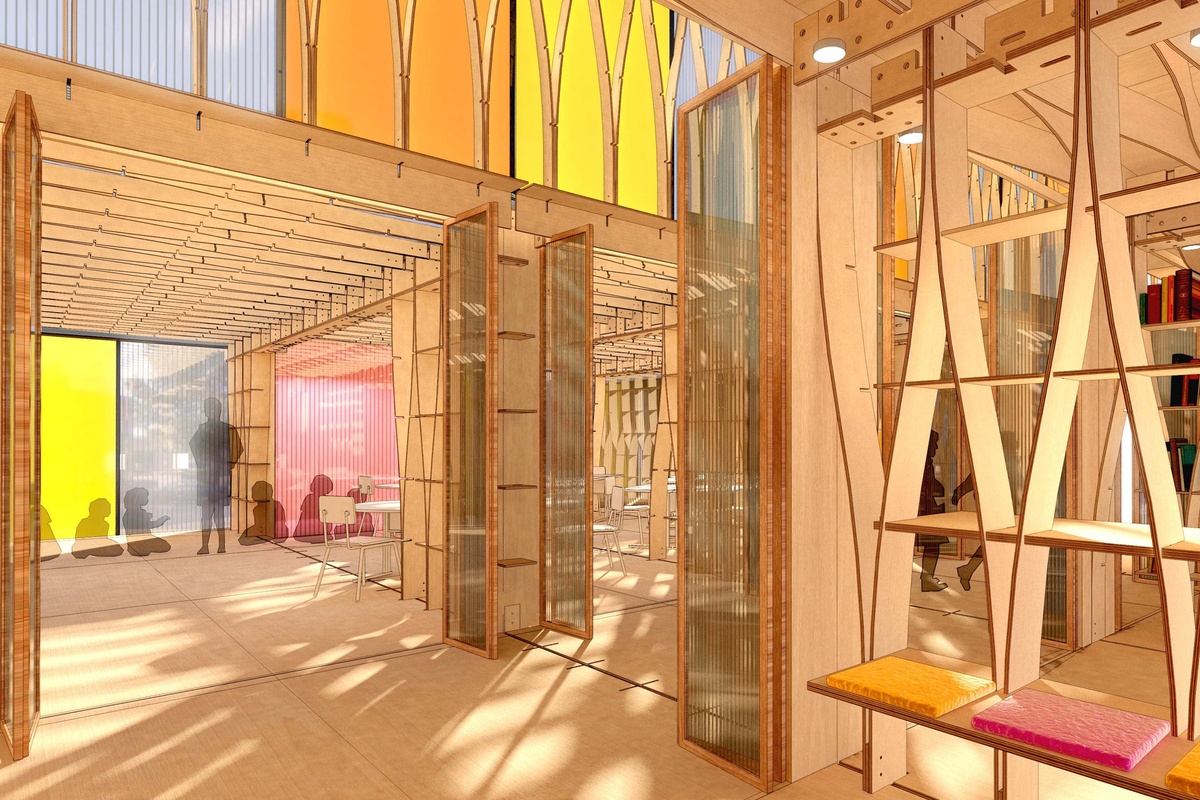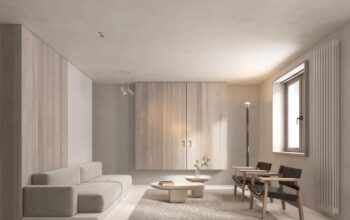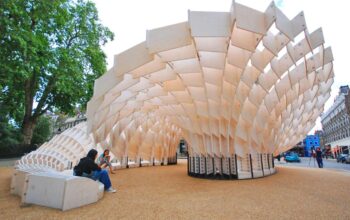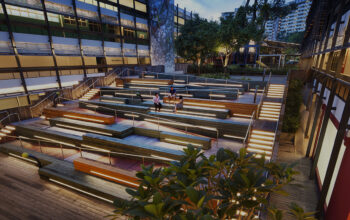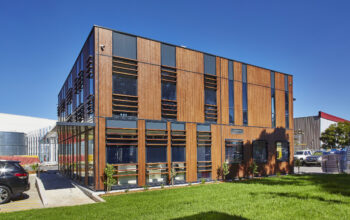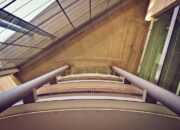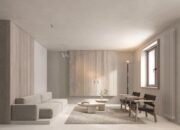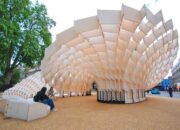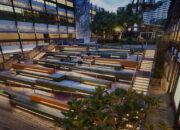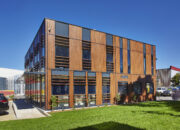In an era defined by rapid change and a constant search for novelty, the world of architecture is witnessing a fascinating and dynamic trend: the rise of pop-up architecture. These temporary structures, born from the desire for flexibility, engagement, and often, a touch of the unexpected, are transforming urban landscapes and challenging traditional notions of permanence in the built environment. From fleeting retail experiences to innovative housing solutions, pop-up architecture is proving to be a powerful tool with far-reaching implications. This exploration delves into the wonders of pop-up architecture, examining its diverse forms, underlying principles, and the profound impact it has on how we experience and interact with space.
What is Pop-Up Architecture?
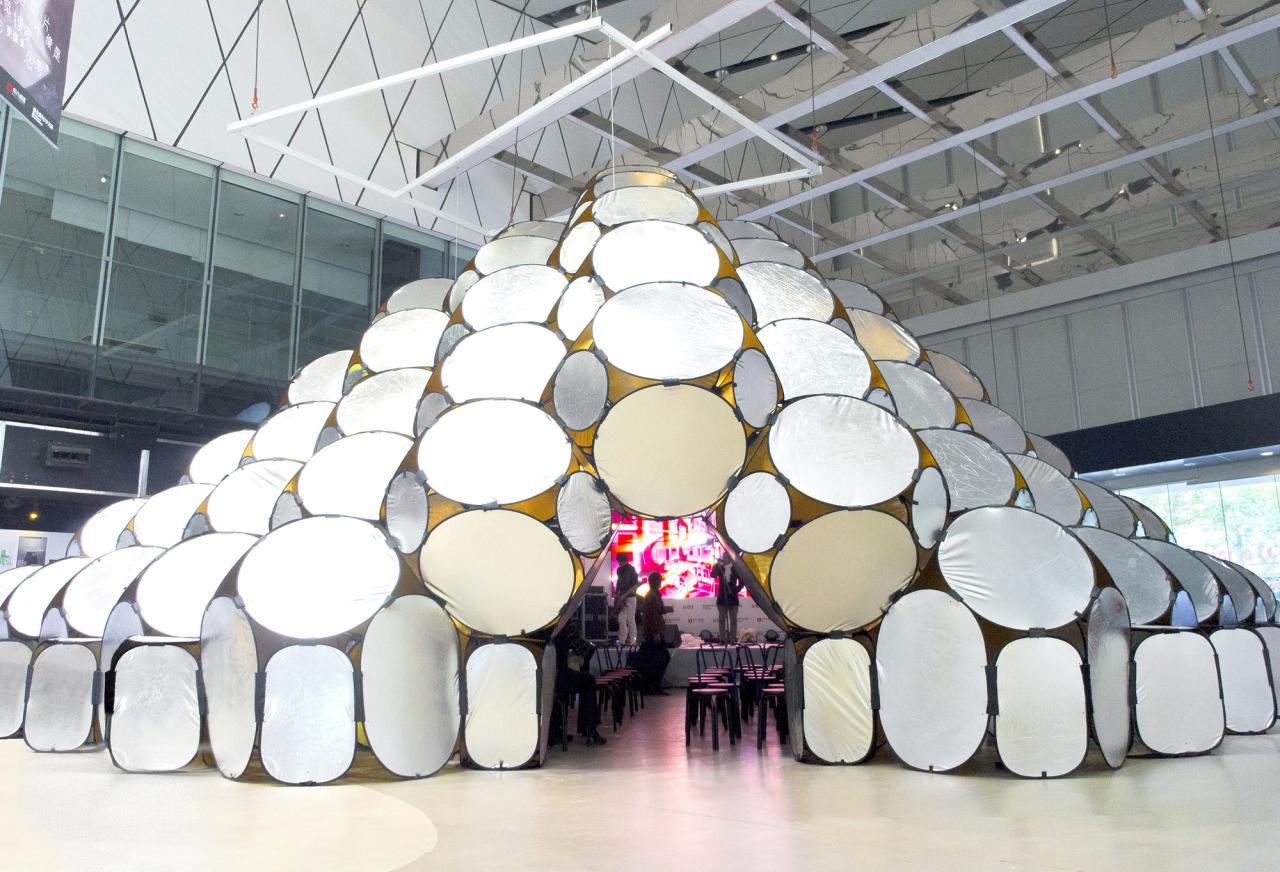
At its core, pop-up architecture refers to temporary structures designed for short-term use. Unlike traditional buildings intended for longevity, these interventions are conceived with mobility, adaptability, and a finite lifespan in mind. They are often characterized by their ease of assembly and disassembly, their ability to transform underutilized spaces, and their capacity to create unique and memorable experiences. Pop-up structures can range from small, modular units to larger, more complex installations, but they all share the fundamental characteristic of transience. This temporary nature allows for experimentation, responsiveness to immediate needs, and the creation of a sense of event and discovery. The inherent ephemerality of pop-up architecture fosters a dynamic interaction with the urban fabric, injecting vibrancy and a sense of the temporary into otherwise static environments.
A Kaleidoscope of Forms
The versatility of pop-up architecture is evident in its diverse range of applications, each addressing specific needs and offering unique experiences:
A. Retail and Commercial Spaces: Perhaps the most visible form of pop-up architecture is its use in retail. Pop-up shops provide brands with opportunities to create buzz, test new markets, launch limited-edition products, or engage with customers in unconventional locations. These temporary stores can range from repurposed shipping containers transformed into chic boutiques to inflatable structures housing interactive brand experiences. Their fleeting presence often generates a sense of urgency and exclusivity, driving consumer interest and creating memorable brand interactions.
B. Food and Beverage Establishments: Pop-up restaurants, bars, and cafes have become a popular phenomenon, offering chefs and entrepreneurs the chance to experiment with culinary concepts, test locations, or create unique dining experiences without the long-term commitment of a traditional brick-and-mortar establishment. These temporary eateries can appear in unexpected places – vacant lots, rooftops, or even within existing businesses – adding a sense of adventure and spontaneity to the dining scene. Food trucks and mobile kitchens can also be considered a form of pop-up architecture, bringing culinary delights directly to consumers in various locations.
C. Event and Exhibition Spaces: Pop-up structures are frequently employed for temporary events, festivals, exhibitions, and trade shows. Their flexibility allows for the creation of unique and adaptable spaces that can be tailored to the specific needs of the event. From temporary pavilions housing art installations to modular stages for musical performances, pop-up architecture provides a cost-effective and visually engaging solution for short-term gatherings. The ability to quickly assemble and dismantle these structures is particularly advantageous for events that move between different locations.
D. Emergency and Humanitarian Relief: In times of crisis, pop-up architecture plays a crucial role in providing rapid and temporary shelter, medical facilities, and community support centers. Lightweight, easily transportable, and быстро возводимые structures are essential for responding effectively to natural disasters or humanitarian emergencies. Innovations in materials and modular design have led to the development of durable and functional pop-up solutions that can provide dignified and safe spaces for those in need.
E. Artistic Installations and Public Interventions: Artists and designers often utilize pop-up architecture as a medium for creative expression and public engagement. Temporary installations can transform public spaces, provoke thought, and offer new perspectives on the urban environment. These interventions can range from whimsical and playful structures to more critical and socially conscious pieces, often aiming to interact directly with the public and challenge conventional perceptions of space and art.
F. Housing and Accommodation Solutions: While still an evolving application, pop-up architecture is being explored as a potential solution for temporary housing needs, affordable living, or even disaster relief. Modular and prefabricated units can be быстро assembled to create temporary communities or individual dwellings. Innovations in sustainable materials and efficient design are making pop-up housing options increasingly viable and comfortable.
Advantages of Pop-Up Architecture
The growing popularity of pop-up architecture can be attributed to a multitude of compelling advantages:
A. Cost-Effectiveness and Reduced Risk: Compared to traditional construction, pop-up structures often involve lower initial investment costs. The temporary nature reduces long-term financial commitments related to rent, maintenance, and property taxes. This lower barrier to entry allows entrepreneurs, artists, and organizations to experiment with new ideas and locations with less financial risk.
B. Flexibility and Adaptability: Pop-up structures offer unparalleled flexibility in terms of location and configuration. They can be deployed in underutilized urban spaces, adapting to the specific context and needs of a particular event or purpose. Their modularity allows for easy reconfiguration and expansion, making them highly adaptable to changing requirements. This adaptability is crucial in a rapidly evolving world where needs and opportunities can shift quickly.
C. Engagement and Novelty: The temporary nature of pop-up architecture often generates a sense of excitement and urgency. Their fleeting presence creates a “now or never” mentality, encouraging people to visit and experience them before they disappear. This novelty can be a powerful tool for attracting attention, generating buzz, and creating memorable experiences that leave a lasting impression.
D. Sustainability and Resource Efficiency: While the temporary nature might initially seem counterintuitive to sustainability, pop-up architecture can be designed with a strong focus on resource efficiency. The use of lightweight, recyclable, and reusable materials, as well as modular designs that minimize waste, can contribute to more sustainable building practices. Furthermore, the ability to activate existing underutilized spaces reduces the need for new construction and its associated environmental impact.
E. Community Activation and Urban Revitalization: Pop-up structures can inject life and vibrancy into neglected or underutilized urban areas. By temporarily activating vacant lots, empty storefronts, or public spaces, they can attract people, stimulate local economies, and foster a sense of community. They can serve as catalysts for urban revitalization, demonstrating the potential of overlooked spaces and inspiring more permanent development.
Material and Structural Considerations
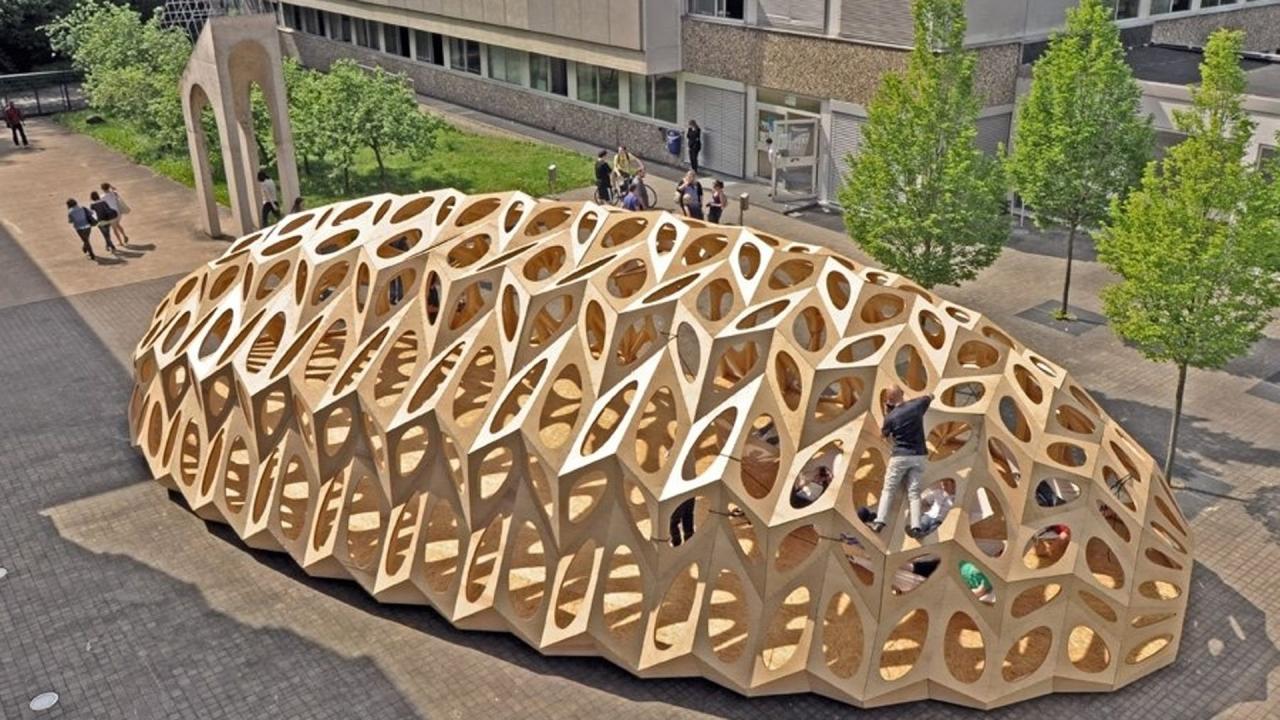
Creating successful pop-up architecture requires careful consideration of materials and structural design, prioritizing factors like portability, ease of assembly, and durability for the intended lifespan:
A. Modularity and Prefabrication: Many pop-up structures utilize modular and prefabricated components that can be easily transported, assembled, and disassembled. This approach streamlines the construction process, reduces on-site labor, and allows for efficient storage and reuse of elements. Standardized modules can be combined in various configurations to create different spatial arrangements.
B. Lightweight and Durable Materials: Materials commonly used in pop-up architecture include lightweight metals (like aluminum), durable fabrics (such as reinforced PVC or ETFE), timber, and innovative composites. These materials offer a balance of strength, portability, and weather resistance, ensuring the structural integrity of the temporary structure while facilitating ease of transport and handling.
C. Ease of Assembly and Disassembly: A key characteristic of pop-up architecture is the speed and simplicity of its erection and dismantling. Designs often incorporate intuitive connection systems, requiring minimal specialized tools or labor. This rapid deployment and retrieval are essential for the temporary nature of these structures and minimize disruption to the surrounding environment.
D. Transportation and Logistics: The design must consider the practicalities of transporting the structure and its components to and from different locations. Compact and easily packable elements are crucial for efficient logistics and minimizing transportation costs and environmental impact. Flat-pack designs are particularly advantageous for maximizing transport efficiency.
E. Sustainability in Material Choices: Increasingly, designers are prioritizing sustainable materials for pop-up architecture, opting for recycled content, renewable resources, and materials with low embodied energy. The focus is on creating temporary structures with a minimal environmental footprint throughout their lifecycle, from production to disposal or reuse.
Notable Examples
The world is replete with inspiring examples of pop-up architecture that showcase innovation, creativity, and the power of temporary design:
A. The Nomadic Museum (Shigeru Ban): Constructed from shipping containers and cardboard tubes, this temporary museum traveled to various locations around the world to house Gregory Colbert’s “Ashes and Snow” exhibition, demonstrating the potential for large-scale, transportable cultural spaces.
B. MINIMOD (MAPA Architects): This prefabricated, modular dwelling offers a sustainable and flexible housing solution that can be easily transported and installed in diverse environments, showcasing the potential for temporary yet comfortable living spaces.
C. Boxpark (London): A retail development constructed from repurposed shipping containers, Boxpark exemplifies how temporary structures can create vibrant and engaging commercial hubs, breathing new life into urban areas.
D. The Serpentine Pavilion (Various Architects): Each year, a renowned architect designs a temporary pavilion for the Serpentine Gallery in London, serving as a platform for architectural experimentation and public interaction, highlighting the role of pop-up structures in fostering design innovation.
E. Icehotel (Jukkasjärvi, Sweden): While seasonal, the Icehotel, built entirely from ice and snow, represents a unique form of temporary architecture that captivates visitors and showcases the creative possibilities of ephemeral materials.
F. Mobile Performance Stages: Numerous portable and быстро возводимые stages are used for outdoor concerts and events, demonstrating the practicality and visual impact of temporary structures for entertainment purposes.
Challenges and Limitations
Despite its many advantages, pop-up architecture also faces certain challenges and limitations:
A. Regulatory Hurdles and Permitting: Obtaining necessary permits and approvals for temporary structures can sometimes be complex and time-consuming, varying significantly depending on local regulations and zoning laws.
B. Durability and Weather Resistance: While advancements in materials have improved the durability of pop-up structures, they may still be more susceptible to extreme weather conditions compared to permanent buildings.
C. Accessibility Considerations: Ensuring that temporary structures are fully accessible to people with disabilities requires careful planning and design, adhering to accessibility guidelines for ramps, entrances, and interior spaces.
D. Waste Management and End-of-Life Scenarios: Planning for the responsible disposal or reuse of materials at the end of a pop-up structure’s lifespan is crucial for minimizing environmental impact.
E. Public Perception and Acceptance: In some cases, there may be public skepticism or resistance towards temporary structures, particularly if they are perceived as visually unappealing or disruptive to the surrounding environment.
Conclusion
Pop-up architecture stands as a testament to human ingenuity and our evolving relationship with the built environment. Its inherent temporality fosters innovation, responsiveness, and a dynamic interaction with space. From providing immediate relief in times of crisis to creating captivating retail experiences and fostering artistic expression, these ephemeral wonders are leaving an indelible mark on our urban landscapes and challenging our perceptions of permanence.
As technology and materials continue to advance, and as the need for flexibility and adaptability grows, pop-up architecture is poised to play an even more significant role in shaping the future of our cities and the way we experience the world around us. Embracing the ephemeral nature of these structures opens up a world of possibilities, reminding us that sometimes, the most impactful creations are those designed to gracefully disappear, leaving behind lasting memories and a renewed appreciation for the spaces we inhabit.

